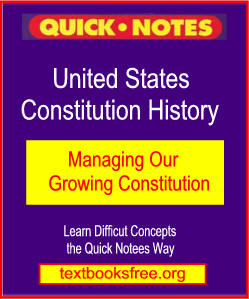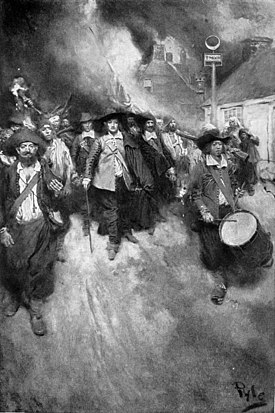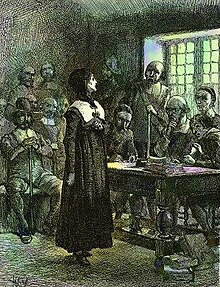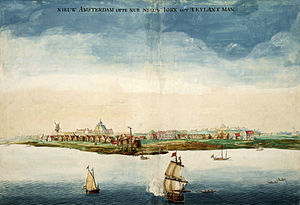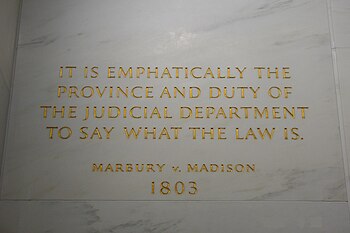|
10. Shays'
1786
Tax Rebellion
Leads to a Constitution
Farmers in western
Massachusetts were having serious problems
paying taxes after
the state government began accepting only
hard currency and not the worthless continental
currency or farm goods. Farmers felt oppressed
by a few elite eastern merchants and politicians
who had set up the tax and legal systems to
benefit themselves. Civil disobedience in the form of
not allowing judges to foreclose on farm
property began in August of 1886. It was the main tool used by the protesters. The
Massachusetts Militia refused the governor's
orders to control the disobedience. The
purposely designed weak central government under Articles of Confederation was unable to raise a
meaningful army. Sam Adams had been the most
aggressive revolutionary leader when it came to
English oppression but now he was a member of the
establishment. He wanted harsh treatment even
including execution against the conspirators.
The governor offered a few minor tax collection
adjustments to help farmers. But he also
passed the very harsh Riot Act which took away
human rights.
|
Then a Militia Act allowed for the execution of
militia who refused to follow orders. Soon the
governor began to raised a privately
financed state militia. This caused a severe reaction by farmer who saw
a private army is the first step on the road to
tyranny. The farmers raised their
own army led by revolutionary war veteran and
militia member
Daniel Shay.
Their main battle was to be a surprise attack at the federal
Springfield arsenal. It didn't work out. The armory was unexpectedly
defended by militia men and they killed four
rebels who were quickly dispersed. They regrouped but
the new Governor's privately financed army led
by Benjamin
Lincoln arrived and dispersed them with a
surprise attack. That was it. Rebellion over.
Eventually there was an amnesty based on signing
of a loyalty oath. Twenty-one leaders were order
hung but only two got the rope. The governor
lost reelection and the new governor was more
sympathetic to the farmers and he pardoned
Shay and the other leaders.
The
rebellion provided much substance for those In
the Philadelphia Congress who feared rebellion
and anarchy. They wanted a strong central government
to control dissent and scheduled a May of 1887 Philadelphia Constitutional Convention.
|
By September a constitution was written.
Ratification followed in July of 1788 and the
Bill of Rights followed in 1791. The
founders wrote what is now the
world's oldest written constitution. France was
writing her first constitution and she is now on her
seventeenth and counting.
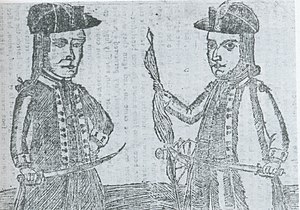
Contemporary depiction of
Daniel Shays (left) and
Job Shattuck, two of the main protest
leaders
Editors Note:
Difficult
economic times after the revolution caused by an
almost worthless Continental Currency caused
many farmers to want debt forgiveness. Their
actions united Oligarchs to maintain economic
stability. |
Causes
of Shay's Rebellion
Economic policy
Aggressive tax and debt collection
Political corruption and cronyism |
Goals
Reform of state government,
later
its overthrow |
Methods
Direct action to close courts;
then military organization in an attempt to
capture the U.S.
arsenal at the Springfield Armory |
Result
Rebellion crushed, and problems of Federal
authority linked to the weak Articles of
Confederation spur U.S. Constitutional
Convention
|
This
popular uprisings cause a fear of potential anarchy
in those with the abilities to accumulate
wealth. They represented a rule of law
conservative constituency which called for
the Constitutional Convention.
Similar
unrest was happening in the Carolinas
where rural farmers known as Regulators
were having a difficult go
of it economically and again taxes were the
problem. It was the beginning of the Tea Party/Libertarian movement. |
